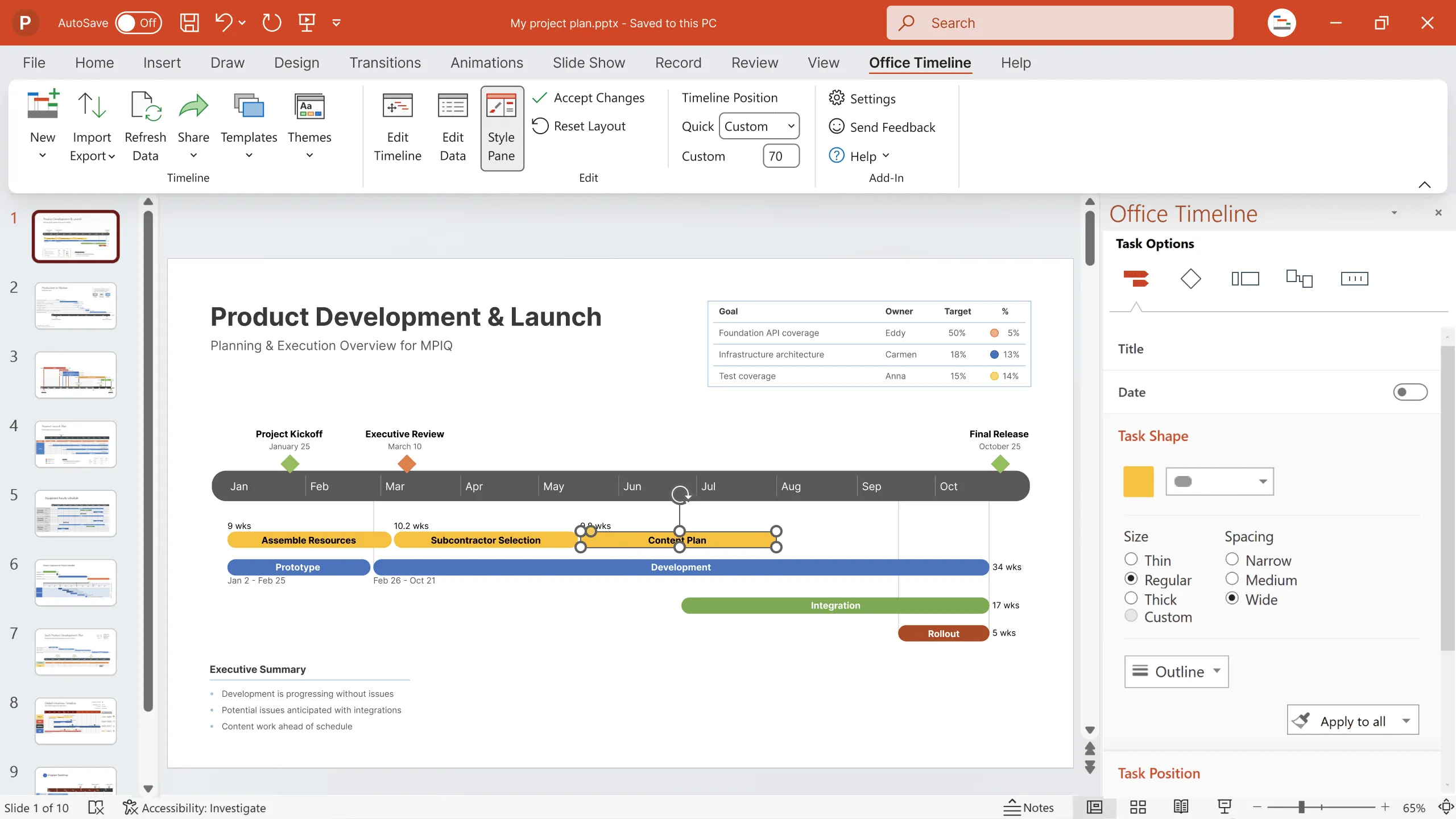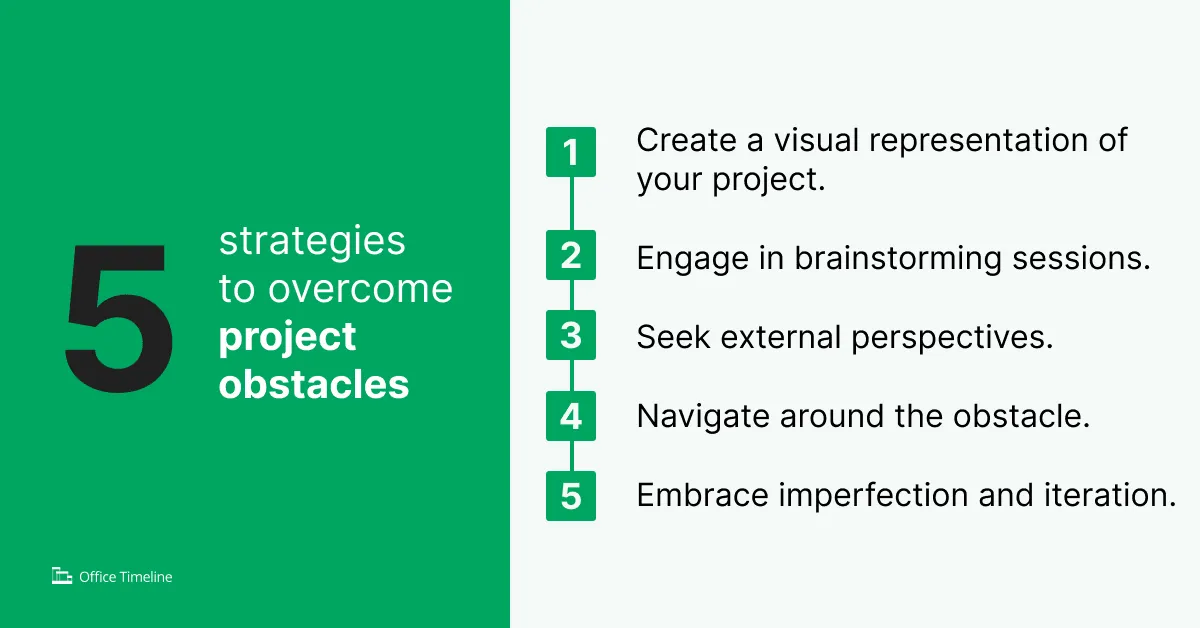5 ways to overcome project obstacles
Master the art of overcoming project hurdles! Explore five unconventional strategies to swiftly tackle daily obstacles and keep your projects on track.

As project managers, we’re accustomed to strategizing for major hurdles, yet it’s the day-to-day snags that can truly test our mettle. These seemingly inconsequential obstacles have the potential to disrupt our projects if not handled adeptly. The mark of a truly exceptional project manager lies in their ability to swiftly navigate and overcome these challenges.
While structured problem-solving approaches are invaluable for tackling significant issues, they may prove cumbersome for the smaller, more frequent hurdles encountered in our daily workflows. This is where unconventional strategies come into play, offering nimble solutions to keep projects on track.
If you find yourself seeking quick fixes for routine challenges or feel your default problem-solving techniques lack agility, consider integrating the following five strategies into your repertoire.
5 proven strategies to overcome project obstacles
Let’s have a look at some tried and tested methods to better deal with challenges in your project management activities.
1. Create a visual representation of your project.
In the midst of grappling with a problem, visual aids can serve as powerful catalysts for fresh insights. Mind maps, flowcharts, or even simple timelines and diagrams can help elucidate complex interrelationships within your project. By visually mapping out key components and their connections, you may uncover hidden patterns or alternative approaches that were previously overlooked.
Embrace creativity and allow your mind to roam freely as you sketch out different perspectives. The act of visually representing your project can stimulate novel ideas and pave the way for innovative solutions.
2. Engage in brainstorming sessions.
When confronted with a stubborn obstacle, it’s time to unleash the full force of your team’s collective creativity. Gather your colleagues for a brainstorming session and encourage them to generate a plethora of ideas, no matter how unconventional or outlandish they may initially seem. The goal is to break free from conventional thinking and explore uncharted territory.
Remember, innovation often resides at the intersection of disparate ideas. By fostering an environment of open-mindedness and uninhibited ideation, you increase the likelihood of stumbling upon a breakthrough solution that transcends the bounds of traditional problem-solving paradigms.
3. Seek external perspectives.
In the throes of a challenging dilemma, it can be beneficial to seek input from individuals outside your immediate sphere of influence. Take a step back and imagine yourself in the shoes of an impartial observer. What advice would you offer to someone grappling with the same obstacle?
By adopting an outsider’s perspective, you may gain fresh insights and uncover alternative approaches that were previously obscured. Whether soliciting feedback from mentors, industry peers, or even unrelated disciplines, embracing external perspectives can inject a much-needed dose of creativity and perspective into your problem-solving process.
4. Navigate around the obstacle.
In some cases, the most expedient path to overcoming an obstacle is to sidestep it altogether. Rather than expending valuable time and resources on a futile attempt to surmount a particularly stubborn barrier, consider circumventing it by focusing on other aspects of the project that are more amenable to progress.
By strategically reallocating your efforts and prioritizing tasks that offer greater potential for forward momentum, you keep your project moving forward smoothly and prevent it from getting stuck in one spot.
5. Embrace imperfection and iteration.
In the pursuit of perfection, it’s easy to become ensnared in a cycle of self-doubt and indecision. Instead of fixating on achieving flawless solutions, embrace the concept of “good enough” and prioritize forward progress over perfection. By relinquishing the need for absolute certainty, you afford yourself the freedom to experiment, iterate, and refine your approach over time.
Remember, every obstacle overcome is an opportunity for growth and learning. By adopting the agile mindset of continual improvement and resilience, you empower yourself to confront challenges with confidence and creativity.
Conclusion
As the terrain of project work constantly shifts, those who can adeptly overcome obstacles have the upper hand. By incorporating these five strategies into your problem-solving toolkit, you’ll be better equipped to tackle challenges with agility, creativity, and resilience.
Remember, the path to progress is rarely linear, but with the right mindset and approach, you can transform obstacles into opportunities for growth and innovation.
FAQs about project management challenges
Here are the answers to your most frequently asked questions about project obstacles.
The most effective problem-solving strategy will depend on the nature of the obstacle and the specific dynamics of your project. Consider factors such as the urgency of the issue, the availability of resources, and the preferences of your team members. Experiment with different approaches and remain flexible in your problem-solving approach.
If you find yourself at an impasse despite employing various problem-solving techniques, don’t hesitate to seek input from colleagues, mentors, or industry experts. Sometimes, a fresh perspective or outside guidance can provide the clarity needed to overcome seemingly insurmountable obstacles.
To support a culture of innovative problem solving within your team:
• Foster an environment of open communication, collaboration, and experimentation.
• Encourage team members to share ideas freely, regardless of their perceived feasibility, and reward innovative thinking.
• Embrace failure as a natural part of the learning process and celebrate successes, however small they may seem.
By cultivating a culture of creativity and resilience, you empower your team to tackle challenges with confidence and ingenuity.
Common challenges in project management include:
• scope creep;
• resource constraints;
• communication breakdowns;
• timeline delays;
• stakeholder conflicts.
To manage scope creep, project managers should:
• establish clear project objectives.
• regularly communicate with stakeholders to manage expectations.
• implement change control processes to evaluate and approve scope changes
Project managers can address resource constraints by prioritizing tasks, reallocating resources as needed, outsourcing certain activities, and negotiating with stakeholders for additional support or resources.
Project managers can improve communication within their teams by establishing clear communication channels, setting expectations for regular updates and meetings, actively listening to team members’ concerns, and leveraging communication tools and technologies.
To mitigate timeline delays, project managers should develop realistic project schedules, identify potential risks and project dependencies early on, implement effective project tracking and monitoring systems, and proactively address issues as they arise.
Project managers should handle conflicts among stakeholders by facilitating open and honest discussions, seeking common ground and compromise, involving neutral mediators if necessary, and focusing on the overarching project goals and objectives.
Project management tips and tricks
Turn project data into professional timelines
Get the advanced features of Office Timeline free for 14 days.



